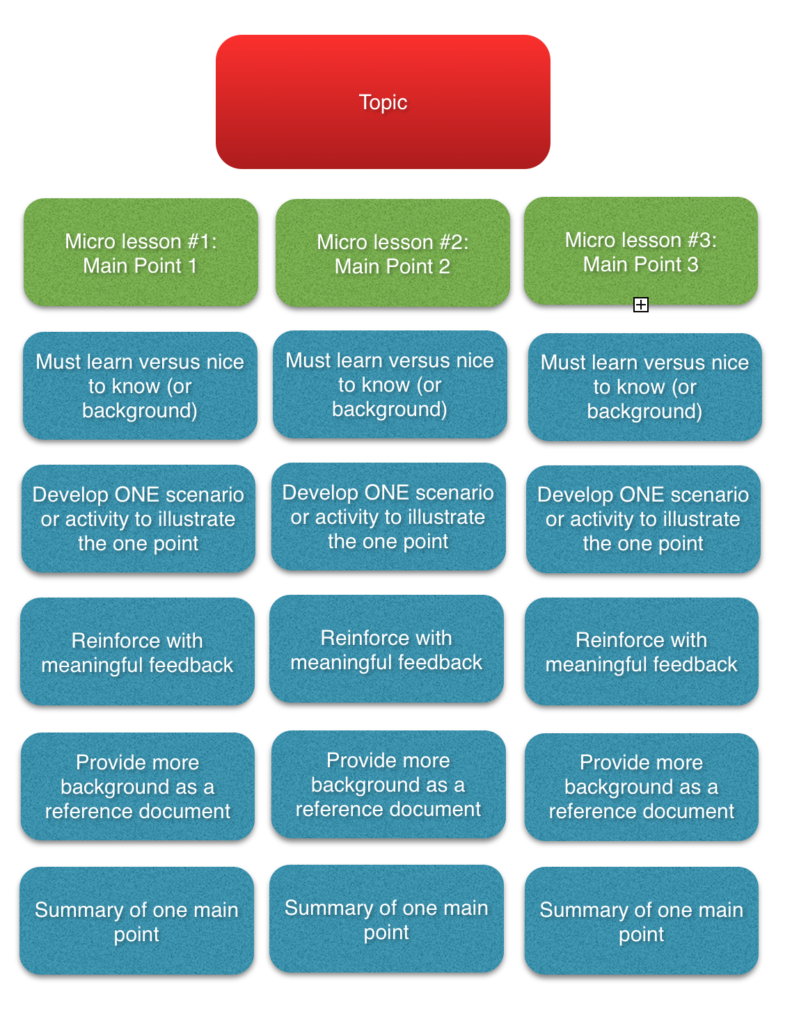
We have been getting a lot of requests lately for shorter (micro learning) training courses – courses that allow someone to get in and take what they need and not get bogged down in a super long training course. This is a great new approach that I love because it means that companies are starting to not only align with what the world is doing outside of learning but it also means that our learners can get training at the moment of need, not just because we have a lot to teach them.
However, there is an interesting issue with this new approach. Subject matter experts and let’s face it, learning practitioners/managers have a fundamental problem with the actual execution of micro-learning. How can something small and on topic be created when there are volumes and piles of content that MUST be taught to everyone. Our learners have to KNOW everything about a particular skill or topic. There is the rub.
So what can we do about that? How do we reconcile all of the CONTENT that will lead them to KNOWLEDGE about a topic? We must focus only on the ONE key point we need them to be able to do at their job and create a training module around that. The amount of content needed should only be to reinforce the ONE concept we are teaching.
Will this approach really throw your subject matter experts off kilter? You bet. You will hear, “What do you mean you aren’t going to put everything from this binder into my course?” This is a new discipline and it will take practice and patience.
Here is how you can be ready:
Micro Learning Framework (also best practice for sequencing your regular courses)
- Select overall topic
- Break it down into small lessons (one main point or learning outcome per lesson)
- Create a spreadsheet that lists all small lessons within one topic
- Build one small lesson at a time:
- Separate the “must learn” versus “nice to know” within the lesson
- Develop one scenario or activity that illustrates the one main point (what someone has to DO not know)
- Reinforce that one activity/scenario with relevant feedback which can be content that is related and needed for them to succeed
- Provide a Resources area that allows them to have access to ALL of the content if they want to dig deeper
- Summarize
- Rinse and Repeat for each small lessons
- Publish each one separately (or best case scenario connect these small micro lessons together into larger topic but give the learner ability to come and go and take only what they need.
This new way of thinking is going to take patience – patience of yourself and the SME’s around you. Sketch it out, have fun with it but more than anything stay true to the ONE MAIN POINT. It will be a journey but you will end up closer to meeting the needs of your learners!



